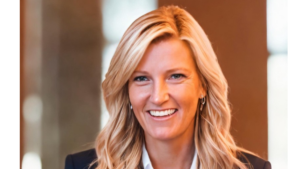By Hayley Coleby, Associate Director and Head of Social at The PHA Group
We’ve all seen them; social media challenges are hard to miss when they go viral. From the ice bucket challenge to the cinnamon challenge and mannequin challenge.
Challenges generally feature users recording themselves performing certain actions, and then sharing the content via social media. The aim will often be to inspire or dare others to repeat the challenge.
Some challenges have had success, encouraging brand and celebrity participations, driving lots of user interactions and in some cases even raising important donations to charity.
Others, meanwhile, have been strongly condemned. The latest craze to sweep social media has been the milk crate challenge. But its popularity has been short lived with TikTok now disabling the milk crate challenge hashtag amid warnings from doctors and officials not to attempt it.
The trend sees participants stack up empty milk crates into a rickety, pyramid-style staircase. The aim is to walk up to the top and back down the other side without falling – something very few manage to achieve and many often leave with serious injuries.
In the Wild West of social media, capitalising on viral social media trends and challenges can be highly rewarding for brands to leverage engagement to meet their marketing objectives. But it can also be extremely difficult to navigate successfully too.
How brands can identify the right social media trends to participate in
Clearly, the milk crate challenge is not a good opportunity for brand activations. The reputational issues for brands could be severe should they put the health of consumers at risk.
However, other brands have successfully either launched or contributed to social media challenges. For example, cosmetics brand Elf commissioned its own song fuelled by influencers, while Colgate asked users to get creative and #makemomsmile in their Mother’s Day campaign, encouraging them to share the results on social media.
In the former example, Elf identified an opportunity to use influencers to gain engagement with their challenge. And in the latter, the secret behind Colgate’s success was tying a key consumer date in with a family friendly challenge that’s very relatable, easy to participate in and relevant to the brand.
Additionally, charity-focused challenges, such as the ice bucket challenge, are also generally safe territory for brands provided the donation is meaningful and the cause is relevant to the brand.
How to successfully engage audiences and promote brands
So, how can you replicate the success of Elf and Colgate’s challenges with your own brand?
As with many successful social media campaigns, authenticity is key. If your brand is seen to be simply jumping on the bandwagon for commercial gain, then consumers will switch off and you could even be in danger of generating negative sentiment.
One way to create an authentic challenge is by attempting your own – as is the case with Elf and Colgate. This doesn’t necessarily need to be high budget or a new idea. For example, inspiration can come from a challenge in mainstream media that can easily be replicated by the public in mobile format. Alternatively, you could involve your own staff in the challenge. Using ‘ordinary people’ makes content more authentic and relatable.
And finally, timing is also really important. Trends tend to last between 3-5 days on TikTok. Contributing to the challenge early on in its lifespan presents the brand as more original and cutting edge. Social media algorithms also prioritise newer content, giving you the best chance of being seen by your target audience.
There’s no one-size-fits-all approach for brands to capitalise on social media trends. And there are potential risks if you get it wrong, with brands potentially losing consumers’ respect. But the rewards are also great if a brand can get it right, with viral trends typically driving high engagement rates. Getting expert advice is crucial for your brand to navigate the challenges successfully and to be able to take full advantage of viral trends.









